Course Details
| Class Starts | 3rd of Every Month |
|---|---|
| Duration | 25 Days |
| Language: | Hindi/English |
| Module: | Residential with Meals |
| Level: | Beginner to Intermediate |
| Certification: | Yoga Alliance |
| Style: | Hatha Yoga |
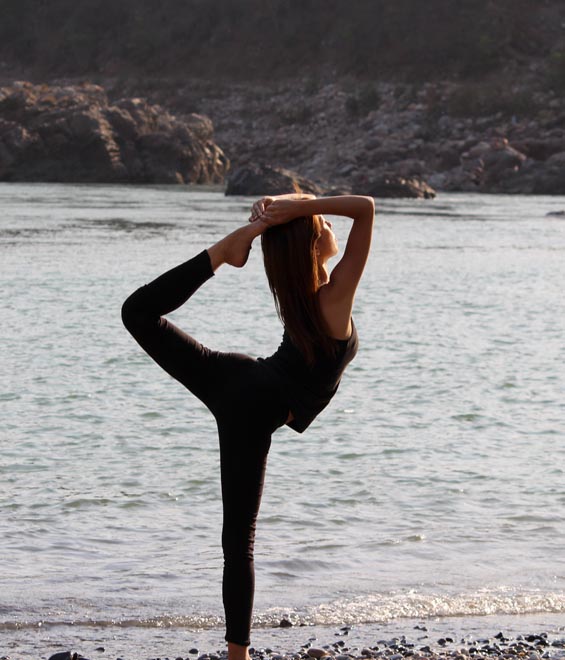
200 Hour Residential hatha yoga teacher training in Goa – Yoga Alliance USA certification course for beginners to intermediate level yoga practitioners – a threshold to building career in Yoga Teaching anywhere in the world. Vishwa Shanti Yoga School offers you an option to blend the beauty of beaches with your 28 days of yoga training in Goa. You can be a beginner or intermediate level yoga practitioner who wants to be able to understand yoga in a way that you become yogi who has the ability to teach yoga to others and who can utilize the knowledge and skill for living a positive and harmonious life.
Our 200 hour yoga teacher training is not just a preparation for you to become a yoga instructor but an exploration of the self – this course allows you to walk an inward journey realizing who you are and what you are meant to be here for. Only the condition for you is, leave behind all your beliefs, dogmas, stand points and come with an open mind to accept what comes to you. India is a land of diversity – the nation that reflects unity in diversity. Be open to cherish the life you will see, live and experience in this part of the world. You will always be thankful to yourself for choosing to come to India and above that to learn yoga in the land where it has been practiced for thousands of years.
+ Our Clients
+ Satisfied Clients
+ Experts Teacher
+ Experience Years
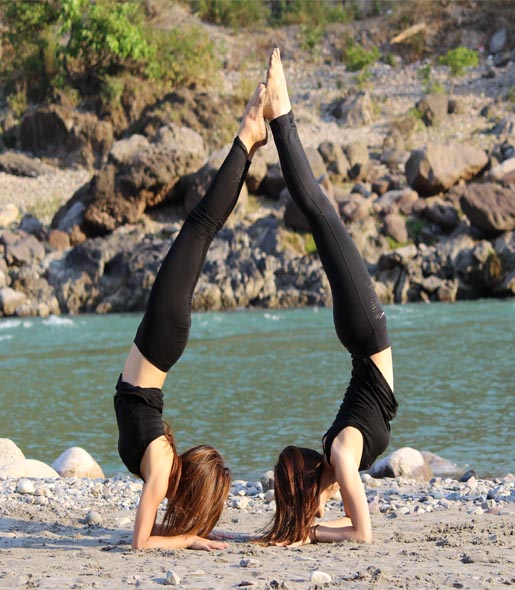
| Class Starts | 3rd of Every Month |
|---|---|
| Duration | 25 Days |
| Language: | Hindi/English |
| Module: | Residential with Meals |
| Level: | Beginner to Intermediate |
| Certification: | Yoga Alliance |
| Style: | Hatha Yoga |
Our teaching is based on Hatha Yoga with basic introduction of Astanga yoga. Hatha yoga basically focuses on asana practice to achieve a state of higher consciousness. Asana here means the posture that is comfortable to you while you stay and which does not cause any side effect later at any point in your life. Your 200 Hour Hatha yoga teacher training will be an intensive program designed as per Yoga Alliance USA’s requirement for an RYS 200. You will study yoga philosophy, yoga anatomy and physiology, practice asanas, meditation, yogic cleansing and learn how to teach these things to beginners to intermediate level yoga practitioners. Teaching methodologies and practice is a major part of this course. You will learn to handle a diverse mass, teach your fellow yogis for certain hours and learn from the mistakes of others and your own.
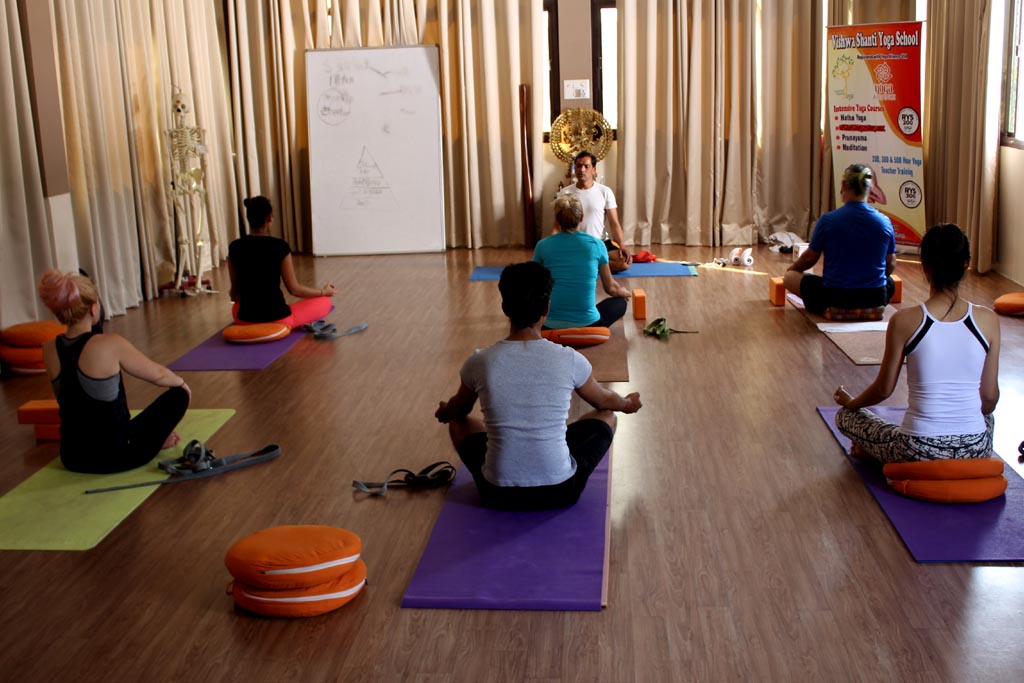
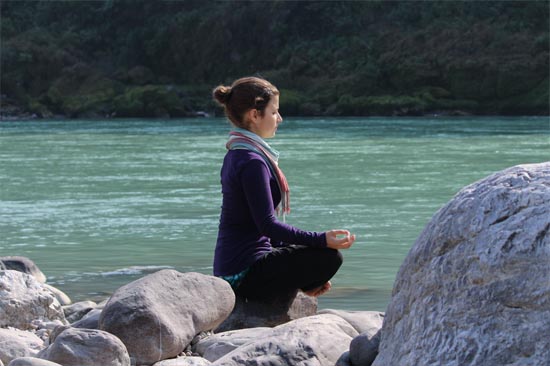

| Dates | Early Bird Discount | Regular Fee | Apply |
|---|---|---|---|
| Coming Soon | US$ 1149 | US$ 1449 | Apply |
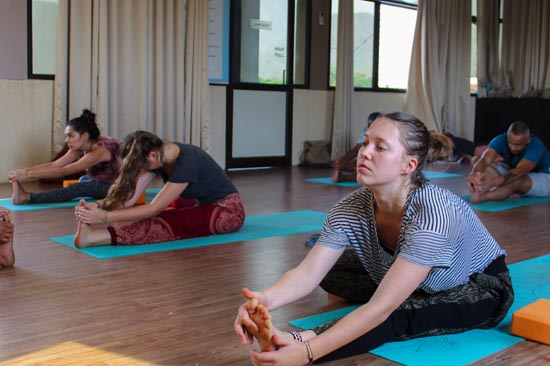
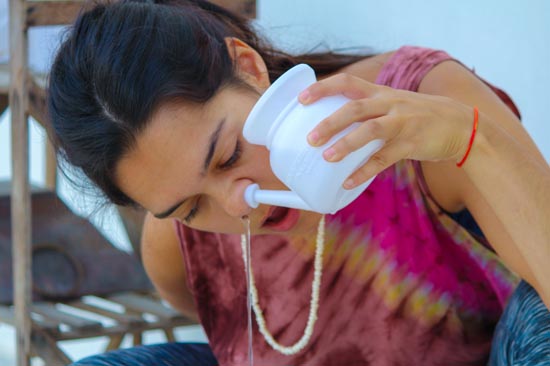
Note: - This is a sample schedule and subject to change according to weather condition, teacher’s schedule, and other circumstances.
| » 06:30 am to 07:00 am | » Shatkarma (Yogic Cleansing) |
|---|---|
| » 07:00 am to 08:30 am | » Asana (Yoga Position) |
| » 09:00 am to 10:00 am | » Breakfast |
| » 10:30 am to 11:45 am | » Yoga Philosophy |
| » 12:00 pm to 01:00 pm | » Lunch |
| » 01:30 pm to 03:00 pm | » Yoga Anatomy |
| » 03:00 pm to 04:00 pm | » Self Study |
| » 04:00 pm to 05:30 pm | » Alignment & Adjustment |
| » 06:00 pm to 07:00 pm | » Meditation/ Pranayama (Yogic Breathing)/ Yog Nidra |
As per Yoga Alliance USA, techniques, training and practice; teaching methodology; anatomy and physiology; yoga philosophy, lifestyle and ethics for yoga teachers plus practicum are the five important subjects to be covered in 200 hour yoga teacher training. We cover yoga asanas, pranayama, kriyas, mantra chanting, meditation and other traditional yoga techniques under techniques, training and practice. Teaching styles, qualities of yoga instructor, mass handeling, types of students,etc. are covered under teaching methodology. Yoga anatomy and physiology makes you understand the effect of yoga practices including asanas, meditation and kriyas on your body systems and organs, chakras, nadis. You will be studying Patanjali's Yog Sutra, the Bhagvad Geeta, Hatha Yoga Pradapika and other philosophical texts and teach your peers on topics your instructor gives you. This is your chance to practice teaching yoga - you will be going to the field as a practitioner and this is a demo class you conduct before registering yourself as an instructor.
| • Vajrasana | • Marjari Asana | • Supta Vajrasana |
| • Druta Utkatasana | • Surya Namaskar | • Matsyasana |
| • Dhanurasana | • Ardha Padma Paschimattasana | • Bhu Namaskarasana |
| • Sirshasana | • Crane Pose | • Simbagarjanasana |
| • Vyaghrasana Pose | • Tadasana | • Sama konasana |
| • Ardh Chandrasana | • Lalasana | • Setu Asana |
| • Sirsha Angustha Yogasna | • Ardha Masyendrasana | • Natarjasana |
| • Santolanasana | • Simbagarjanasana | • Ushtrasana Half |
| • Tiryaka Tadasana | • Dwikonasana | • Shashankasana |
| • Bhujangasana | • Paschimattanasana | • Eka Padattanasana |
| • Sarvangasana | • Eka Padasana | • Poorna Bhujangasana |
| • Poorna Bhujangasana | • Ushtrasana | • Kati Chakarasana |
| • Trikonasana | • Yogamudrasana | • Shalabhasana |
| • Janu Sirshasana | • Mayurasana | • Halasana |
| • Chakrasana | • Poorna Dhanusasana |

» Single Standard Non-Ac Room The room only has a fan.
» Soap bar is provided in the bathroom amenities
» Free wifi
» Led Cable television
» Once alloted and checked in, the room will not be changed.

» Shampoo, Conditioner, Shower Cap, Toothbrush, Toothpaste, Water Bottles, Hair dryer
» Anything ordered separately from the set Yoga menu will be charged accordingly
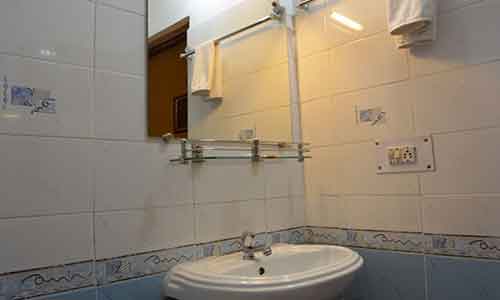
» Cab service on request.
» Ac rooms can be provided at an extra cost per day basis